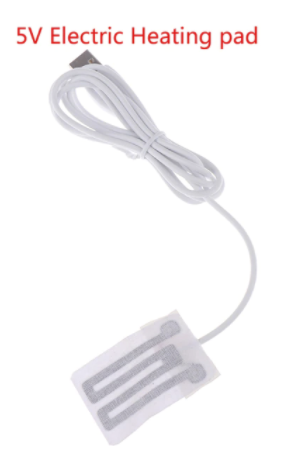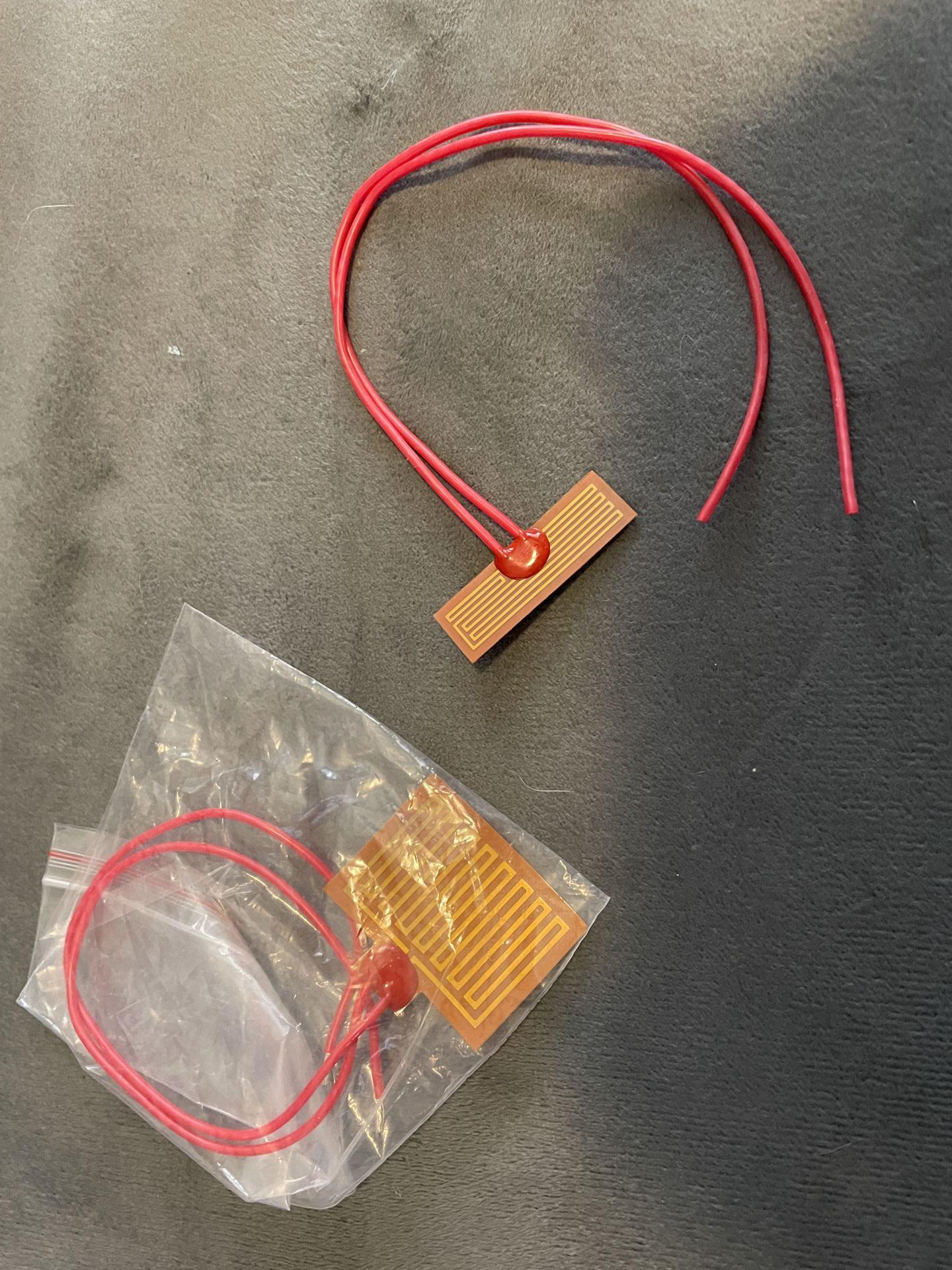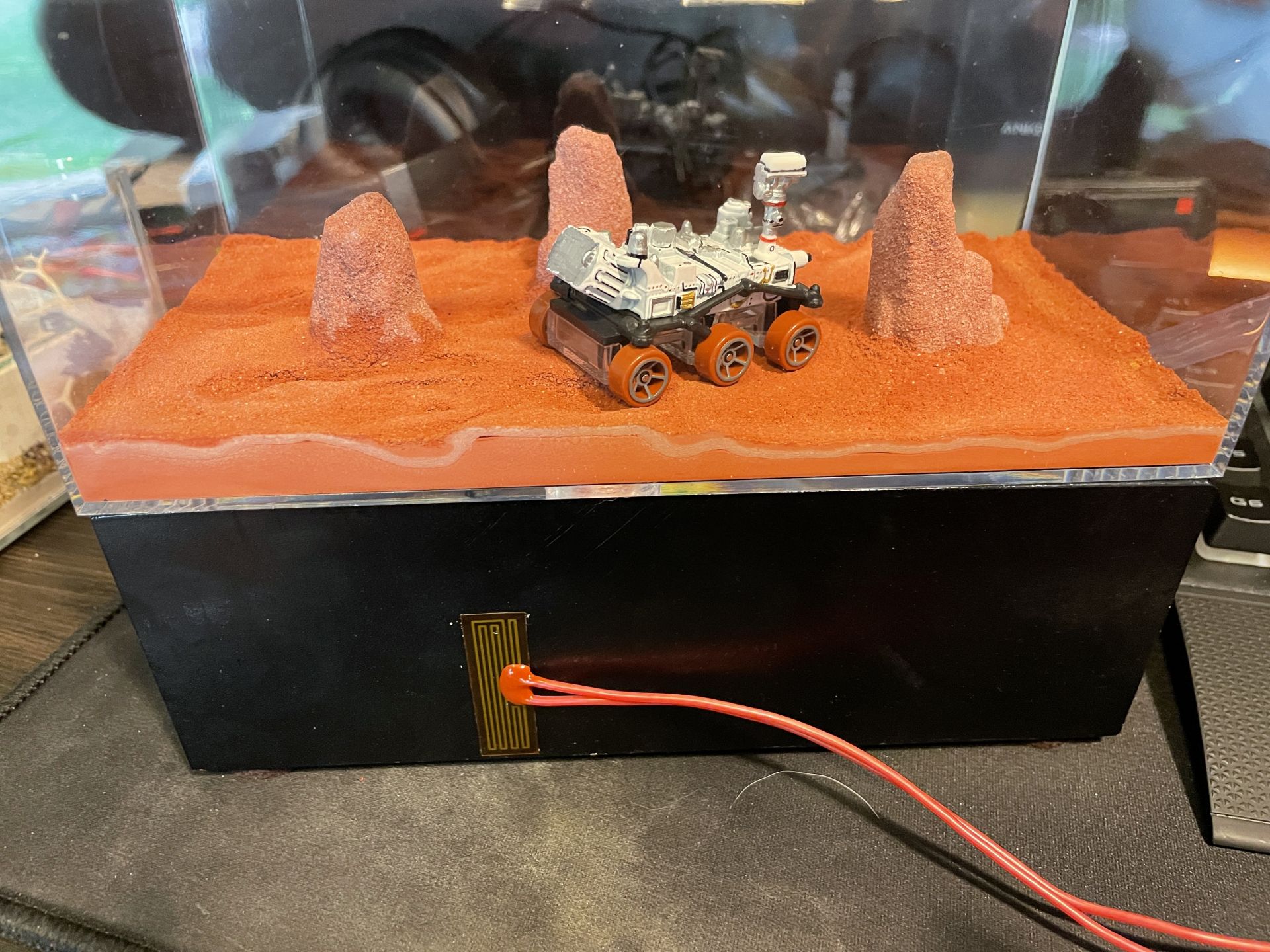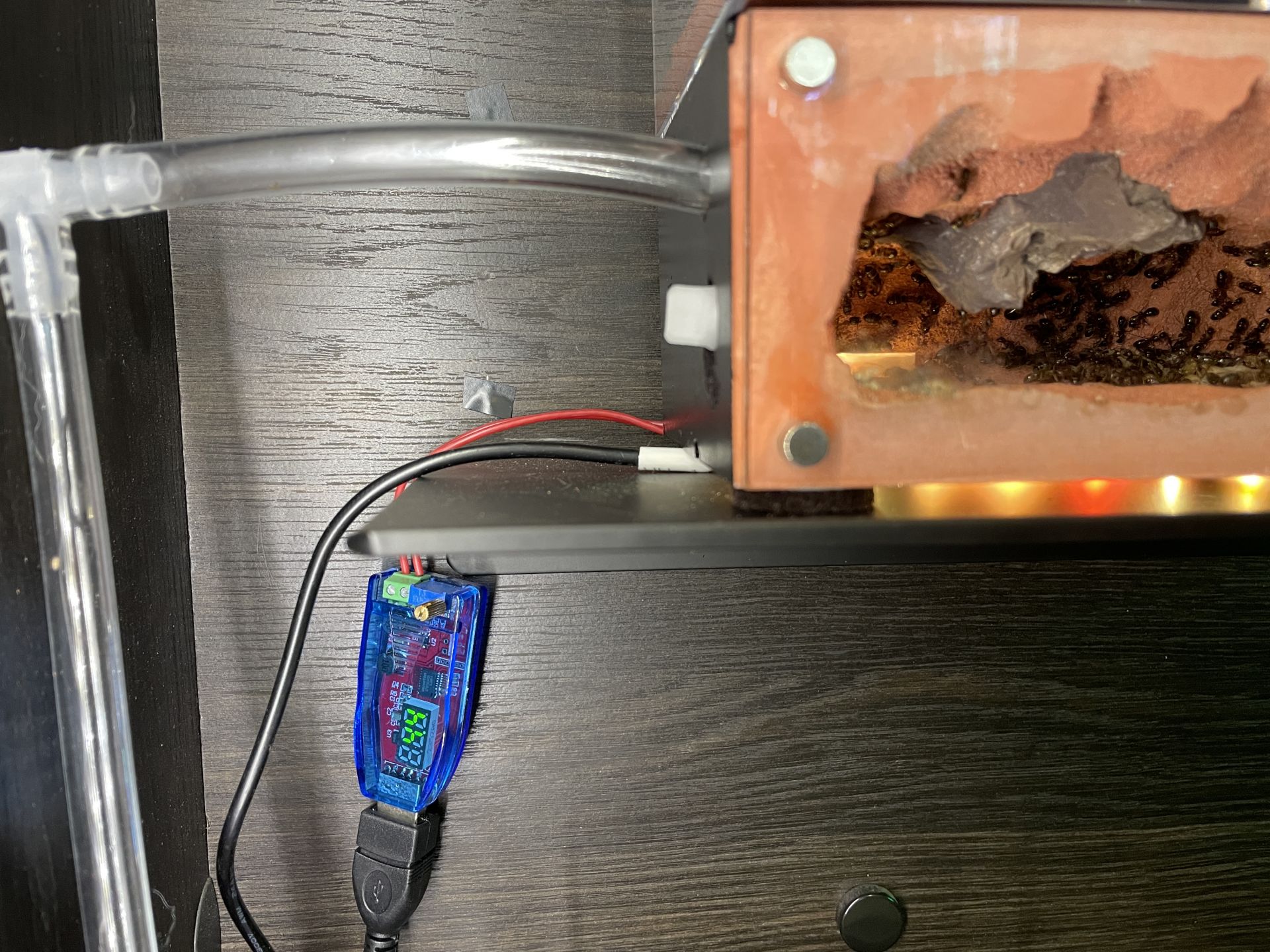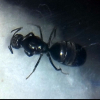Those white heating pads are pretty big, I've tried them. May work well enough if you place a nest partially on or near it. They've been retired to my ant keeping supply bin.
I've been using these little self adhesive polyimide heating elements with success, powered by little 5V USB potentiometers that can output 1-24V to control them. The small one shown can take a maximum of 12V, I find that around 3.5V gets me to around 85F on the interior surface of a mini hearth (with the element stuck vertically on the back nest surface, away from the water tower). The one in the pictures I have since moved to the bottom of that nest, and being a thicker nest I'm finding about 4.4V gets the spot over it to 85F. This element plus the potentiometer costs $14 shipped on Aliexpress. I have a larger 5V max element I haven't tried yet, the little 12V 39x12mm is a great size for the nests I have (medium-ish on down). I would imagine turning the thing up over the max rated voltage = smoke, fire, and no fun. The little dial is stiff and seems hard to turn accidentally.
I've been meaning to share these here for a while. I've confirmed with an infrared thermometer these set up a nice heat gradient, even within a mini hearth, with the surfaces near the element nice and toasty and the opposite end of the nest staying near ambient temp. As you'd expect, the nest material is a poor conductor. I'm also using one stuck to the bottom of the acrylic of a THA Palladium nest, set to 4.2V in the warm months, works great. The output may vary from one to the next so verify your settings before exposing it to your colony, and know that ambient temperature will play a role. If all you have is an oral thermometer, hook the element up, hold the thermometer tip tightly against it and make sure after being on for a good 10 minutes it gets no hotter than you want your nest to get and you should be fine. Measuring the element directly I find it's a good 5-10 degrees F higher than the adjacent interior nest surface.
Here are links to the items:
https://www.aliexpre....9ea04c4dZw2TfK
LED DC DC 5V to DC 1 24V Adjustable Potentiometer USB Step Up/Down Buck Boost Converter Power Supply Voltage Regulator Module|Integrated Circuits| - AliExpress





